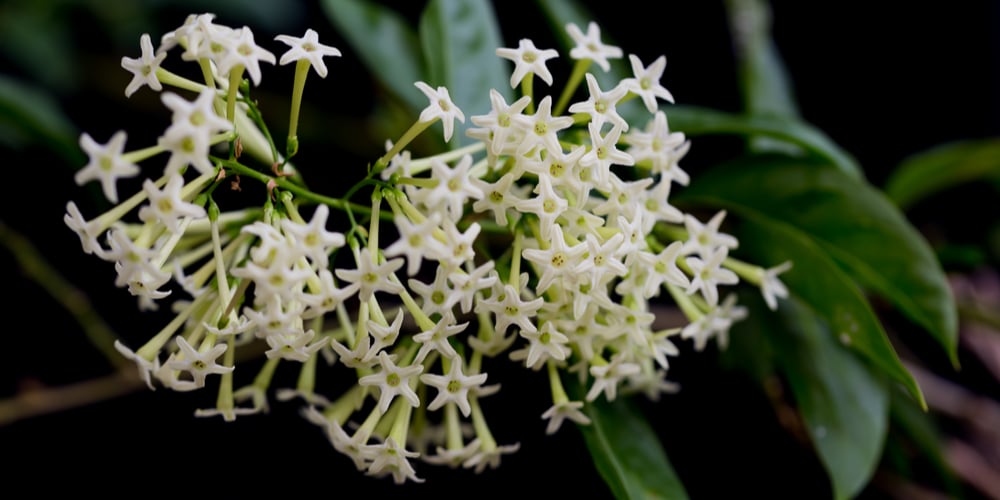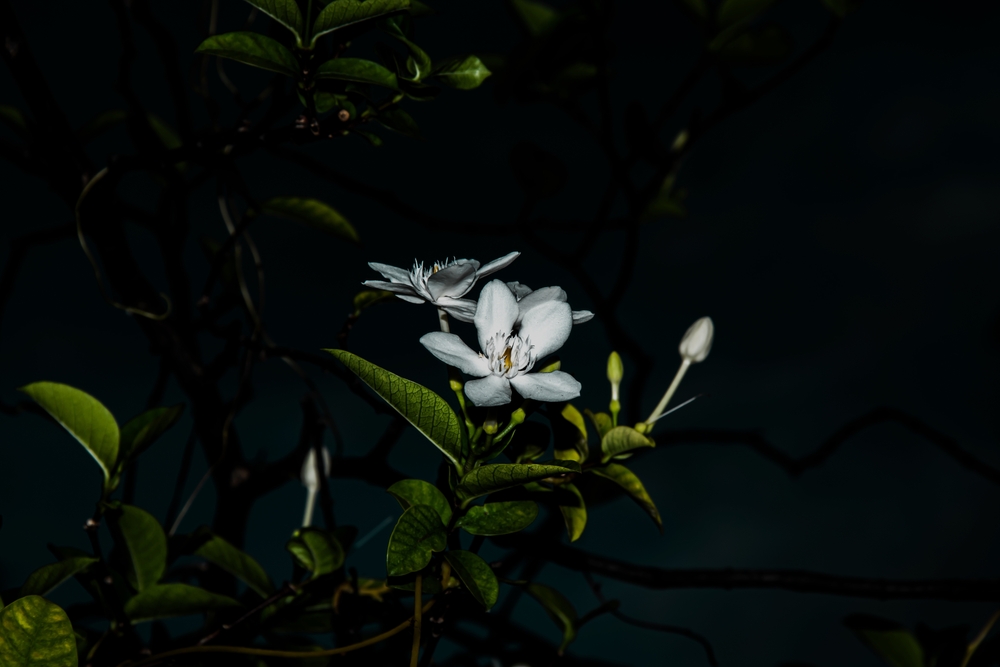Night blooming jasmine, or Cestrum nocturnum, is a gorgeous plant with small, tubular white flowers that bloom in clumps. The flowers have one of the strongest scents in the plant world, making them a popular addition to large outdoor locations and public areas. But when does night-blooming Jasmine bloom? When can we see these incredible flowers?
Only at Night
As the name suggests, night blooming jasmine only blooms after the sun sets. Like moonflowers (a type of morning glory), night jasmine is a nocturnal flower that thrives from dusk until dawn. It’s believed that the flower’s strong scent is to help nocturnal pollinators find the flowers in the dark.
During Warmer Seasons
You should plant night blooming jasmine in the early spring so the roots can take hold by the time the flowers are ready to open. The plant will bloom intermittently from Spring until late Autumn. The flowers bloom in small clusters that help protect the delicate buds from wind and rain.
Throughout the Year
Night jasmine will bloom up to four times a year, with each bloom lasting a few weeks. After their final bloom in Autumn, the plant will produce small white berries full of seeds. Do not eat them. The leaves, flowers, berries, and stems of the plant are considered highly toxic to humans and most animals.
Jasmine Flowers Bloom at the Same Time
Thanks to the plant’s incredible internal clock, all night blooming jasmine flowers in a geographical area will bloom at precisely the same time. This is because of environmental factors such as heat, water availability, and the sun’s circadian rhythm.
Believe it or not, the plant knows what time of year it is because of the amount of daylight. A nocturnal plant like night jasmine relies on the sun to open at night, while a nyctinastic plant like shamrock relies on the sun to close at night.
Why Is My Night Blooming Jasmine Not Blooming?
If you notice your night blooming jasmine isn’t blooming at night, there are a few things that could be wrong.
Under or Over Watering
Night blooming jasmine is more dramatic than other outdoor plants that don’t have flowers. To the plant, flowers are considered non-essential when trying to survive. If you underwater jasmine, the plant will divert all available water to the leaves to continue photosynthesis.
If the plant is overwatered, the plant will struggle with “low blood sugar.” If there’s too much water in the plant’s cells, the nutrients the plant has managed to make can be drowned out in comparison.
Too Much Fertilizer
While jasmine will flourish with light fertilizer, the plant will suffer if you’re heavy-handed. Check to see if your fertilizer has a high concentration of nitrogen. If so, the plant’s stems and leaves will be extremely healthy, but the plant won’t be able to produce flowers.
Lack of Sun
Night Jasmine can survive in partial shade as long as the plant continues to get at least 6 hours of daily sunlight. I know it’s strange that a night-blooming flower needs that much sun, but flowering takes a lot of energy out of a plant.
Night Blooming Jasmine in Summary
Night blooming jasmine is a beautiful plant with fragrant white flowers that only open after the sun sets. The plant can bloom up to four times a year and correlate to other jasmine plants nearby. If the plant doesn’t bloom, it could be a watering problem or too high of a nitrogen content in the soil.

